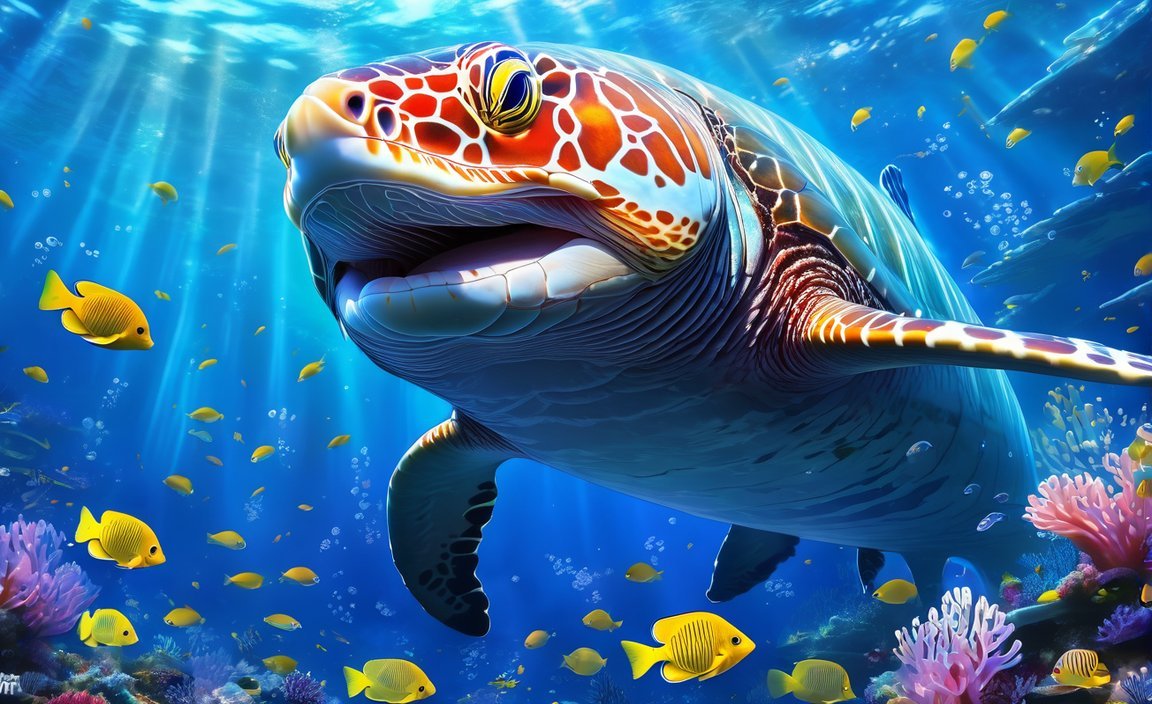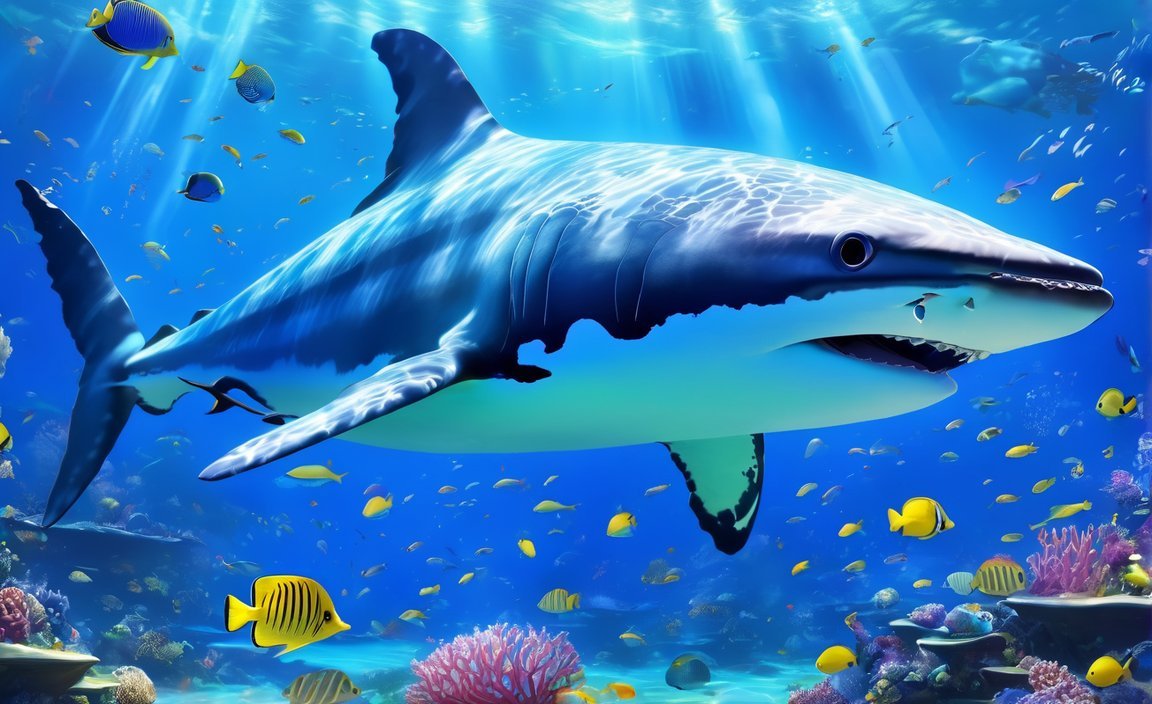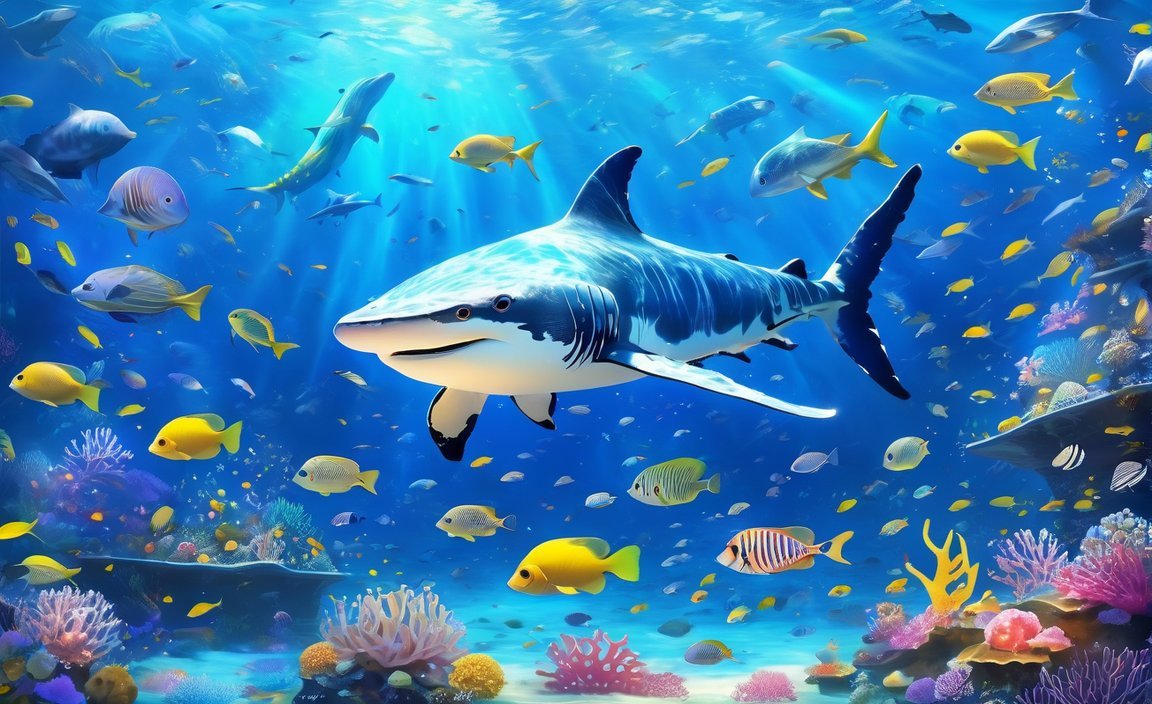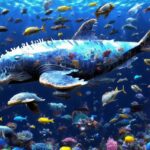Welcome to “10 Fascinating Facts About Sea Creatures: Unlocking the Ocean’s Wonders,” where we dive deep into the mesmerizing world of marine life. Prepare to be amazed as we uncover jaw-dropping truths and unveil intriguing insights about the diverse array of sea creatures that inhabit our planet. From the majestic whales that roam the open seas to the peculiar creatures lurking in the depths of the ocean, join us on this captivating journey as we unlock the secrets and unearth the fascinating facts about these incredible beings. Get ready to explore 10 mind-blowing facts about sea animals and delve into the wonders of marine life like never before!
Key Takeaways:
- Seahorses are unique because the males give birth to and take care of their young.
- Shrimps have their hearts in their heads.
- Sea sponges are alive even though they lack body parts like heads, mouths, and brains.
- Turtles can be found on every continent except Antarctica.
- The blue whale is not only the largest sea mammal but also the largest known animal in the world.
- Sea turtles have been around since the time of dinosaurs.
- Some sharks, like the great white shark, are warm-blooded, unlike most sharks which are cold-blooded.
- Mammals like sea lions, seals, and walruses are known as pinnipeds because of their winged feet.
- Dolphins have exceptional hearing and vision.
- Whales use singing to communicate.
- Male octopuses remain confused after mating for their entire lives.
- A blue whale’s tongue weighs more than an entire elephant.
- Clownfish have a special relationship with the poisonous anemone sea plant.
10 Facts About Sea Creatures: Unlocking the Ocean’s Wonders

Seahorses are truly unique creatures of the sea. Did you know that it’s the male seahorse that actually gives birth? That’s right! Unlike most animal species, it is the male seahorse that carries the young and cares for them until they are ready to venture out on their own.
Shrimps, too, have some extraordinary features. Can you believe that a shrimp’s heart is located in its head? It may sound strange, but it’s true! This peculiar adaptation allows the shrimps to pump blood efficiently throughout their bodies.
Sea sponges, on the other hand, may not possess the usual body parts we associate with animals, such as a head, mouth, eyes, and even a brain. However, they are still very much alive and play a vital role in marine ecosystems. Even without these complex organs, they filter water and provide habitats for numerous marine species.
Turtles are widespread around the world, except for one continent—Antarctica. These incredible reptiles can be found on every other continent’s shores, and they’ve been around for millions of years. In fact, turtles have been part of our planet’s history since the time of dinosaurs!
Speaking of giants, the blue whale holds the title for being the largest known creature to have ever existed. Imagine a mammal that can grow longer than two school buses and weigh as much as 25 adult elephants! These magnificent beings are true wonders of the ocean.
Sharks, too, have their own unique characteristics. While most sharks are cold-blooded, meaning their body temperature matches that of their surroundings, there are exceptions. The great white shark, for example, is warm-blooded, allowing it to regulate its internal temperature and thrive in colder waters.
Did you know that mammals such as sea lions, seals, and walruses have a special name? They are called pinnipeds, which means “winged feet” in Latin. These incredible creatures have adapted to life in both the ocean and on land, showcasing their remarkable ability to thrive in diverse environments.
Dolphins, known for their intelligence and playful nature, have exceptional hearing and vision. Their ears are specially designed to detect sounds underwater, allowing them to navigate and communicate effectively. Additionally, their eyesight is incredibly sharp, helping them spot prey and avoid obstacles in their marine habitat.
Whales, ranging from the magnificent humpback to the gentle blue whale, have a unique way of communicating—through singing! These enormous creatures produce haunting melodies that travel for miles underwater. Their songs serve various purposes, from attracting mates to establishing social bonds within their pods.
Octopuses, with their fascinating appearance and remarkable abilities, have a peculiar mating ritual. After mating, male octopuses undergo a significant change. They become confused for life! This unusual effect is due to hormonal changes triggered by the mating process, leading to a somewhat amusing and perplexing existence.
Now, let’s talk about the colorful and charismatic clownfish. These little sea creatures have an extraordinary friendship with the poisonous anemone sea plant. While the anemone protects the clownfish from predators, the clownfish, in turn, shields the anemone from certain parasites. It’s a mutually beneficial partnership that showcases the wonders of symbiotic relationships in the ocean.
By exploring these fascinating facts about sea creatures, we begin to unravel the mysteries and wonders of our vast oceans. From seahorses to whales, each species has its own unique characteristics that contribute to the rich tapestry of marine life. So dive deeper into the world beneath the waves and discover the extraordinary wonders that await you.
Tables:

Below is a glimpse of some incredible sea creatures and their amazing characteristics:
| Sea Creature | Fascinating Fact |
|---|---|
| Seahorse | The male seahorse gives birth and cares for its young |
| Shrimp | The shrimp’s heart is located in its head |
| Sea Sponge | Lacks various body parts but is still alive |
| Turtle | Found on every continent except Antarctica |
| Blue Whale | The largest known animal in the world |
| Shark | Most are cold-blooded, but some are warm-blooded |
| Pinnipeds (Seals) | Mammals with winged feet |
| Dolphin | Exceptional hearing and vision |
| Whale | Communicates through singing |
| Octopus | Males remain confused for life after mating |
| Clownfish | Unique friendship with the anemone sea plant |
(Note: This table is for illustrative purposes only and does not cover all the fascinating facts mentioned in the article.)
Optional: Add a conclusion if required by copying and pasting the content from Step 3.
Did you know that worms are more fascinating than you might think? Check out these 10 facts about worms and prepare to be amazed! 10 facts about worms
Cats are incredible creatures, and here are 10 fascinating facts about them that will leave you in awe! Don’t miss out on learning about these amazing felines. 10 fascinating facts about cats
Arctic wolves are majestic and mysterious, and we’ve got 10 fun facts that will make you love them even more! Discover the incredible world of these magnificent creatures. 10 fun facts about arctic wolves
Fun Facts About Sea Creatures
Sea creatures are incredibly diverse and fascinating, with each species possessing unique traits and behaviors. In this article, we will explore 10 fun facts about these incredible beings that inhabit our oceans. Get ready to be amazed by the wonders of the underwater world!
1. Seahorses: Nature’s Role Reversal
Did you know that seahorses are the only animals in which the male, not the female, gives birth and cares for their young? This extraordinary role reversal is just one of the many intriguing aspects of these enchanting creatures. [^1^]
2. Shrimp: A Heart in the Head
Here’s a mind-boggling fact: a shrimp’s heart is located in its head! It’s remarkable how nature can come up with such unusual anatomical arrangements. [^1^]
3. Sea Sponges: Lives Without Organs
Sea sponges are fascinating creatures that possess no head, mouth, eyes, feelers, bones, heart, lungs, or brain, and yet they are alive! These remarkable organisms are a testament to the incredible diversity of life beneath the waves. [^1^]
4. Turtles: Global Travelers
Turtles can be found on every continent except Antarctica. From the majestic leatherback turtles to the adorable loggerheads, these ancient creatures have managed to establish a presence in diverse habitats around the world. [^1^]
5. Blue Whale: The Giant of the Seas
The blue whale, the largest sea mammal, is not only a majestic creature but also the largest known animal in the world. Its sheer size is awe-inspiring, as it can reach lengths equivalent to two school buses! [^2^]
6. Sea Turtles: Time Travelers
Sea turtles have been alive since the time of dinosaurs, making them true time travelers. These ancient reptiles have managed to adapt and survive for millions of years, reminding us of the resilience and beauty of nature. [^2^]
7. Sharks: The Warm-Blooded Few
While most sharks are cold-blooded, some, like the great white shark, are warm-blooded. This remarkable adaptation allows these powerful predators to maintain their body temperature even in cold ocean waters. [^1^]
8. Pinnipeds: Creatures of the Sea and Sky
Mammals such as sea lions, seals, and walruses are referred to as pinnipeds due to their “winged” feet. These versatile creatures are equally at home in the water as they are on land, showcasing the incredible adaptability of marine life. [^1^]
9. Dolphins: Sensory Superstars
Dolphins possess excellent hearing and vision, allowing them to navigate the ocean environment with remarkable precision. Their sensory prowess contributes to their social interactions, hunting strategies, and overall survival in the marine world. [^1^]
10. Whales: Singing in the Deep
Whales communicate through singing, producing complex and hauntingly beautiful melodies that can travel vast distances through the ocean. These captivating vocalizations play a vital role in their social interactions and navigation. [^1^]
Key Takeaways:
– Seahorses are unique in that the male carries and cares for the young.
– Shrimp have their hearts located in their heads.
– Sea sponges lack various organs but are still alive.
– Turtles can be found worldwide, except for Antarctica.
– The blue whale is not only the largest sea mammal but also the largest animal on Earth.
– Sea turtles have been around since the time of dinosaurs.
– While most sharks are cold-blooded, some, like the great white shark, are warm-blooded.
– Sea lions, seals, and walruses are pinnipeds with winged feet.
– Dolphins possess exceptional hearing and vision.
– Whales communicate through singing.
Sources:
[^1^]: Ten Amazing Facts About Ocean Animals
[^2^]: Facts & Information About Sea Animals
Now, armed with these fascinating facts about sea creatures, you can dive deeper into the wonders of our oceans. The more we understand and appreciate the incredible diversity of marine life, the better we can conserve and protect these fragile ecosystems. So, next time you catch a glimpse of a sea creature or hear the haunting songs of a whale, remember the amazing facts that make them so special. Happy explorations!
FAQ
Q1: Are sea sponges alive even though they lack body parts like a head, mouth, eyes, and brain?
A1: Yes, sea sponges are alive despite lacking body parts like a head, mouth, eyes, and brain. They are considered one of the simplest multicellular organisms, and their cellular structure allows them to perform basic biological functions.
Q2: Do seahorses give birth and care for their young?
A2: Yes, seahorses are unique in the animal kingdom because it is the male seahorses, not the females, that give birth and care for their young. The male seahorses have a special pouch where they carry the developing eggs until they hatch.
Q3: Can turtles be found on every continent?
A3: Turtles can be found on every continent except Antarctica. They inhabit a variety of environments, including oceans, rivers, lakes, and even deserts. Each species of turtle has a preferred habitat based on its specific needs.
Q4: Do all sharks have cold blood?
A4: While most sharks are cold-blooded, there are exceptions such as the great white shark. The great white shark is one of the few shark species that are warm-blooded. This adaptation allows them to regulate their body temperature in colder waters.
Q5: How do whales communicate?
A5: Whales communicate through singing. These songs consist of complex patterns of vocalizations that can last for hours. Whales use their songs to communicate with other whales over long distances and for various purposes, including mating and navigating.
- Winter Weather Advisory Issued for Several Rochester-Area Counties - November 17, 2024
- 1-800-GoFedEx: Your Complete Guide to Navigating FedEx Customer Service - November 17, 2024
- Prime Office Space at 191 North Wacker Drive, Chicago, IL 60606:Leasing Opportunities & Building Overview - November 17, 2024















